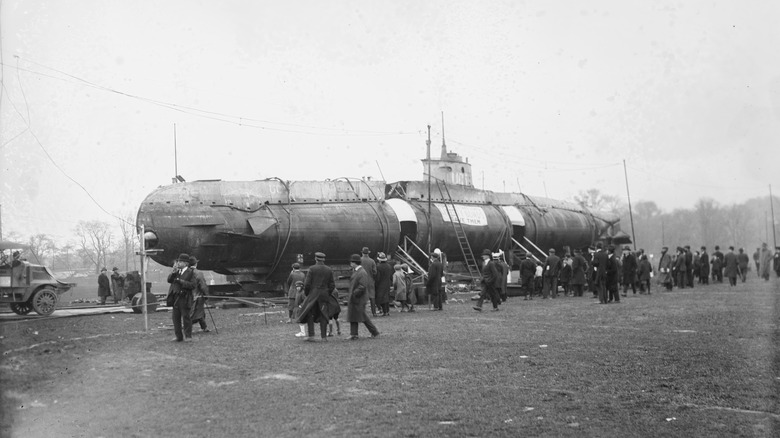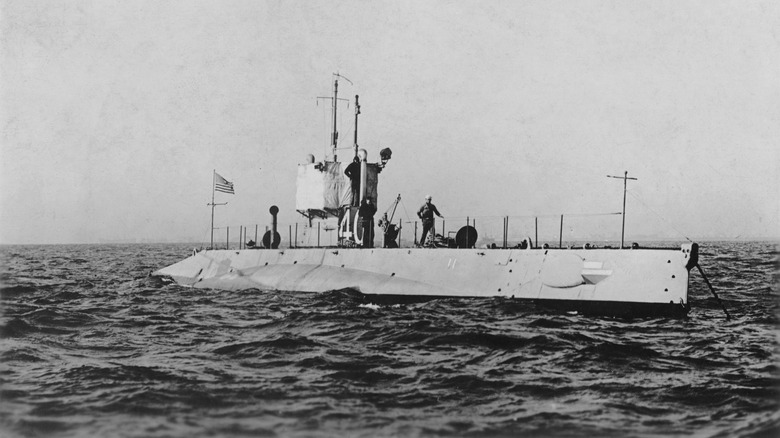German U-Boat Vs. Submarine: Is There A Difference?
People like to make things more complicated than they need to be, and the words we choose to describe things are just one of those many ways. For instance, consider that all bourbons are whiskey, but not all whiskeys are bourbon. In that same vein, all U-boats are submarines, but not all submarines are U-boats. What you call them depends on where they're made.
A U-boat is nothing more than the Anglicized term for a German submarine and isn't strikingly different from U.S. subs. The whole "boat" designation comes straight from the German word for "undersea boat" — Unterseeboot (shortened to U-boot). If you're not a military buff but the term still sounds familiar, you might recognize it from Hollywood films like "Das Boot," "U-571," "The Ministry of Ungentlemanly Warfare," or "Greyhound," all of which feature the feared German sub.
Germany completed its first U-boat (the U-1) in 1905 and was the first nation to use a submarine during World War I. By comparison, the U.S. Navy commissioned its first sub (the U.S.S. Holland) in October 1900. Neither comes close to the first sub used in battle, though, a distinction that goes to a vessel called the Turtle, created by Yale graduate David Bushnell. The one-man submersible was used during the Revolutionary War in 1776, which is an incredible 156 years after Dutch inventor Cornelis Drebbel launched the first known submersible in 1620. It was a sophisticated wooden contraption covered with grease to keep it watertight and traveled about 15 feet under the surface of the River Thames (England).
Submarines are really nothing more than undersea boats, after all
Germany first started testing submarines in 1851, and by the end of WWI, had built some 334 U-boats (with another 226 under construction). They were vastly superior to U.S. subs.
Not only could a typical WWI U-boat could go faster (six knots at the surface, eight knots underwater), farther (a range of 25,000 miles), but could submerge four times faster (to a depth of 165 feet — which is nothing compared to today's advanced subs) and were capable of taking on surface ships 20 times their size. Meanwhile, the U.S. Navy — which had considered subs a fad before WWI – put 72 in service by the war's end. They could go deeper and move half a knot faster when submerged, but those were the only advantages.
The technological advancements made on submarines between WWI and WWII were profound. By the time the U.S. entered the second World War, it had developed a philosophy that utilized "fleet submarines" and had 288 in its fleet.
By comparison, Japan had 174 in service during the war, three-quarters (128) of which were destroyed. Germany, on the other hand, had a staggering 1,162 U-boats in operation. In fact, Germany had more U-boats destroyed (785) than the U.S. and Japan combined. No matter where they came from, all submarines (which have proved pivotal throughout military history) are undersea boats ... but only the Germans had U-boats.

